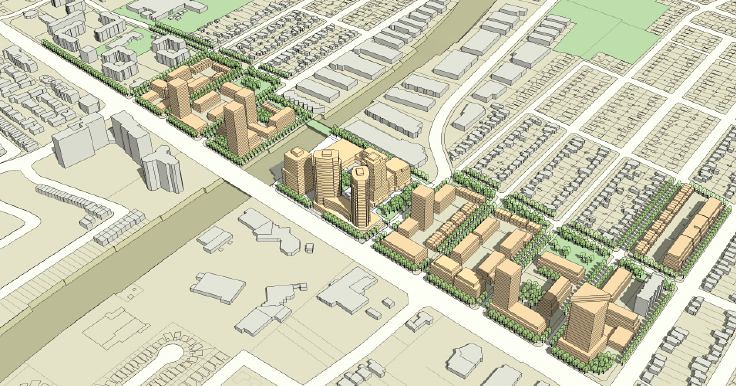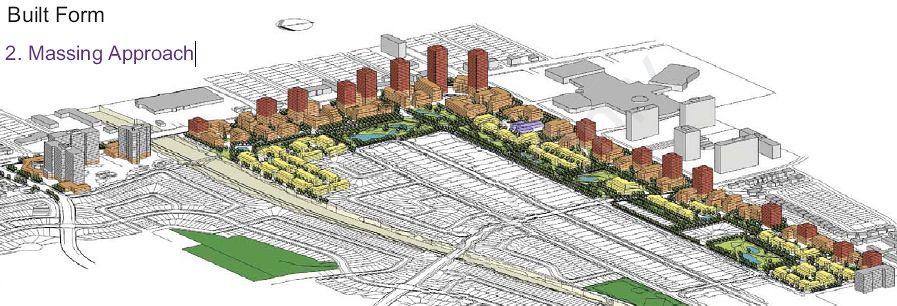innsertnamehere
Superstar
The DRL is a no go without the DRL? well that is confusing.

The DRL is a no go without the DRL? well that is confusing.

Is it even possible to improve transit in the Yonge corridor between Finch and Hwy 7 without adding pressure to the Yonge subway line?
What can be done to improve transit on this section of Yonge which is admittedly one of the busiest stretches in the GTA? Should these residents of the North end of Toronto and the south end of York Region be expected to wait till things imprive in Toronto before moving ahead on all transit projects?
Le's say tomorrow, York abandons the idea of a subway, decides to build a Bus Rapid Transit on dedicated lanes between Major Mackenzie and Finch.
York pays the full cost of $20m per KM for all 10.2 KM, including extra charges, the tab comes in at around $200 Million. In addition they buy 22 newly built Bombardier Super buses, (which coincidentally have the identical passenger capacity of the TTC's new streetcars of 256 passengers) for maybe $50 million. Lets round the project to $250 Million in order to make easy transfers from BRT to Subway at Finch.
you forgot the political upheaval fee of $1B the sole source Bombardier markup of 10%, plus the never ending tender and EA period of X years....


Le's say tomorrow, York abandons the idea of a subway, decides to build a Bus Rapid Transit on dedicated lanes between Major Mackenzie and Finch.
York pays the full cost of $20m per KM for all 10.2 KM, including extra charges, the tab comes in at around $210 Million. In addition they buy 22 newly built Bombardier Super buses, (which coincidentally have the identical passenger capacity of the TTC's new streetcars of 256 passengers) for maybe $50 million. Lets round the project to $275 Million in order to make easy transfers from BRT to Subway at Finch.
Spacing the vehicles 1 minute (about 1 km) apart and giving them traffic light signal priority, the trip would take 22 minutes in each direction and would have the capacity to carry somewhere around 10,000 per hour during peak times.
Toronto pays nothing for the project, Billions in tax dollars are saved, York gets rapid transit in this essential location and the entire project can be completed in just 2 years. Sounds like a win for everyone...Except those waiting on the platform at Davisville as 3 full subways pass them buy.
Is it even possible to improve transit in the Yonge corridor between Finch and Hwy 7 without adding pressure to the Yonge subway line? What can be done to improve transit on this section of Yonge which is admittedly one of the busiest stretches in the GTA? Should these residents of the North end of Toronto and the south end of York Region be expected to wait till things improve in Toronto before moving ahead on all transit projects?
Is it even possible to improve transit in the Yonge corridor between Finch and Hwy 7 without adding pressure to the Yonge subway line? What can be done to improve transit on this section of Yonge which is admittedly one of the busiest stretches in the GTA? Should these residents of the North end of Toronto and the south end of York Region be expected to wait till things improve in Toronto before moving ahead on all transit projects?





Here's the thing: the bulk of the ridership on the Yonge corridor south of Highway 7 is actually coming from north of Highway 7 (or transferring FROM Highway 7). It's only through narrow thinking that this ridership MUST continue down Yonge.
You could build a subway from the corner of Eglinton & Don Mills to RHC via Don Mills and the Richmond Hill GO line for the same cost as building the Yonge Subway extension.
Sigh. I feel like there's fundamental things people here keep missing. This exercise is not entirely about the best way to move people in and out of Toronto. It is, certainly for York Region and the province, far more about building suburbs differently. The subway is a means to an end. (And I'm sorry if I sound snippy; I know some people are just putting ideas out there, and it IS stimulating, but it's also largely pointless. That said, thanks to Jaycola for putting those maps up again while I was typing.)
The province (and, by law, the region and lower-tier municipalities) have already designated several places on Yonge, and the corridor, in general, as nodes for major growth. That's done. Even if building a subway along Don Mills was cheaper, it fundamentally undermines the ENTIRE growth strategy for the Greater Golden Horseshoe. Your plan is totally antithetical to what is in the York Region Official Plan (and Toronto's Avenues strategy, FWIW) though, like Jaycola's strategy, it might be more palatable to Toronto taxpayers. I'm not sure that should be the most important thing, or even under consideration, when we're talking about how to undo the planning mistakes of the past couple of generations.
I know some other people here get that but others have to stop looking at this as the best place to draw a line on a map or save money. You're doing it backwards. You START by looking at where the growth is supposed to go and how to service and facilitate it. Really, if you want to start developing major north-south corridors other than Yonge Street, you're at least 60 years too late, and maybe 100. Maybe longer. Yonge is Yonge. It's the main artery of York Region and Toronto. Period.
I like the idea of taking the DRL up Don Mills but that is NOT a replacement for the Yonge plan. North of Finch, Don Mills is effectively residential, meaning there is ZERO potential for redevelopment. Obviously the same goes for the GO line and that's without getting into the technical issues of running subway trains on a CN corridor. Your train is safely off Yonge, and achieving nothing else.
And it doesn't matter what Torontonians think is an efficient use of their money. Firstly, because they're already paying way less in taxes than the 905 and secondly because any Metrolinx funding will be raised regionally.
Lemme say this, in conclusion, and then I won't say it again for a few pages: It's a great intellectual exercise to ponder how the region could look different, where transit should be built, and Urban Toronto is a great place for it. But this thread has become bloated with people trying to undermine or second guess the Yonge subway and it has to just stop already. It's just getting ridiculous, everyone has an idea to move it here or there or save money this way or that way. Just try to remember these things:
*It's a done deal, but for the funding.
*It's perhaps the biggest no-brainer in the whole Big Move in terms of expansion
*It is fundamental not just to The Big Move but to Places to Grow (i.e. the provincial growth strategy)
*It is, by extension, fundamental to the growth management and official plans of York Region, Markham, Vaughan and Richmond Hill
*Some of the best planners in the world were brought in to build new, transit-oriented communities along the subway lines, effectively reinventing the suburbs
*Building anything other than a subway up to Hwy 7=less development
=more urban sprawl
=more traffic going into Toronto
Those are all just facts. Feel free to discuss.
Gweed. I notice your map includes an extension of the yonge line up to Steeles. I guess that section won't place any added burdon on the yonge line, or is that an acceptable cost to accommodate development on North yonge within Toronto's borders?
What your plan will not provide is a transportation link between north York centre and Richmond Hill centre as envisioned in places to grow. I happen to live at yonge and steeles and can say with all honesty that if I'm going shopping I'm more likely to travel north to Richmond Hill than south to North York or Toronto. for dining and entertainment I am more likely to go south.
Our nodal growth strategy is about creating urban centres throughout the region. not linking two adjoining centres, North York and RH centre is effectively isolating them.
From Finch? Two km, and two stops (Cummer and Steeles) as per the proposed extension.Up to steeles is one block though right?